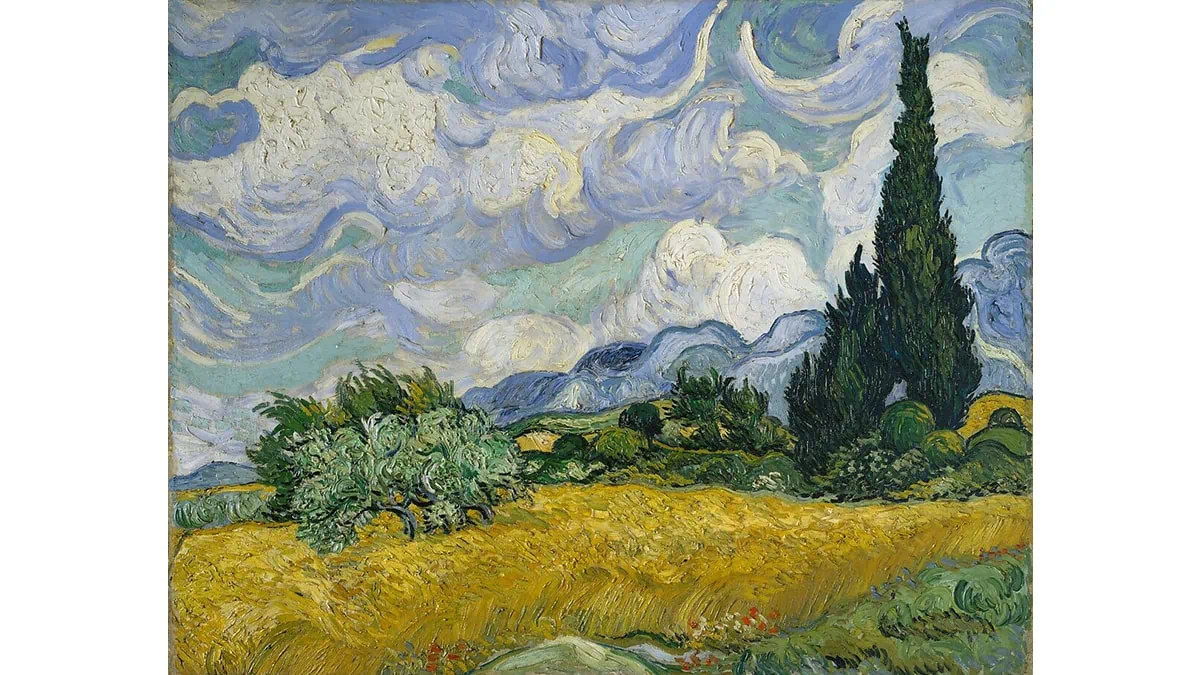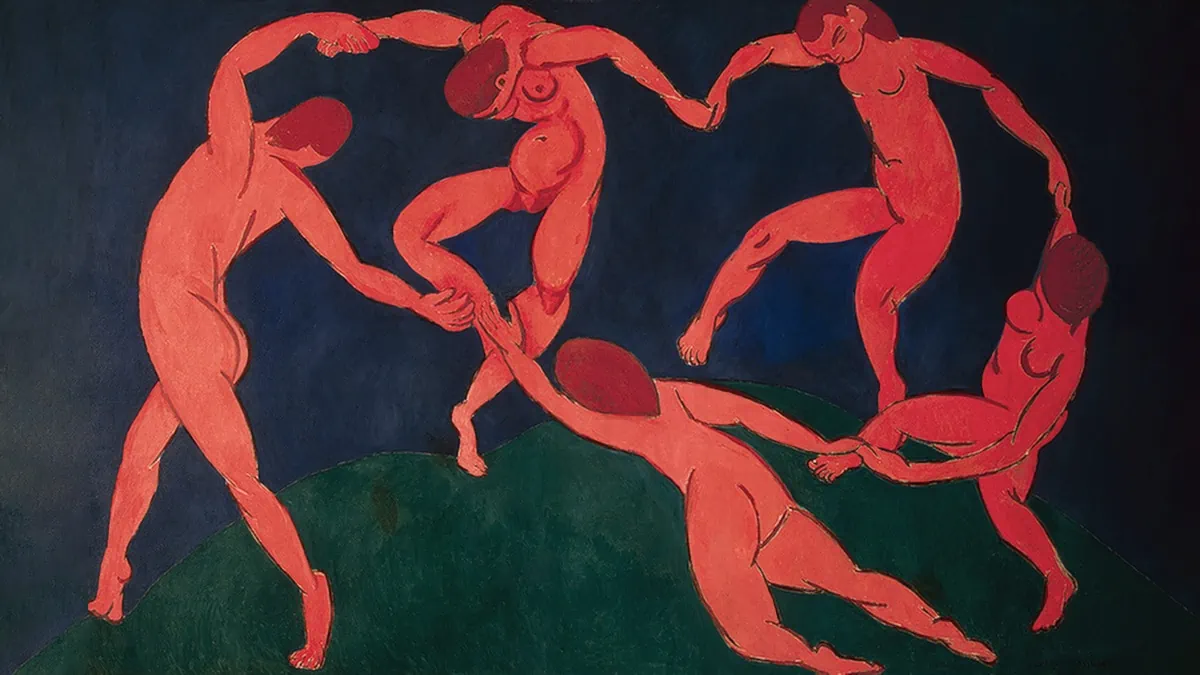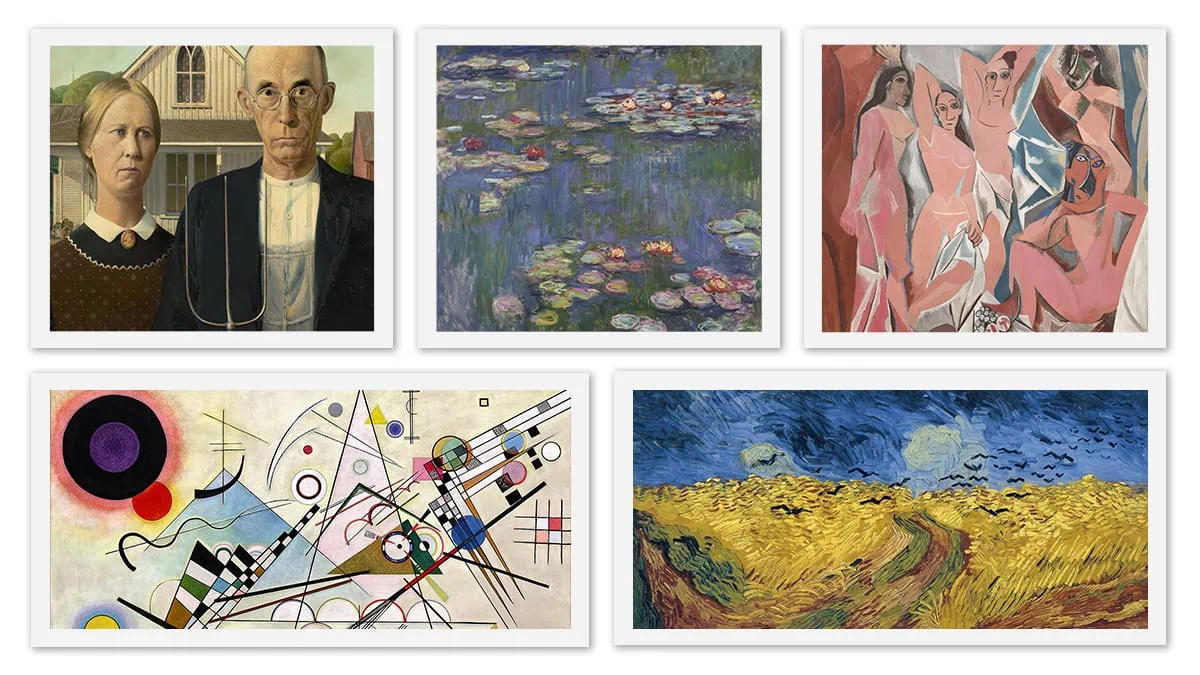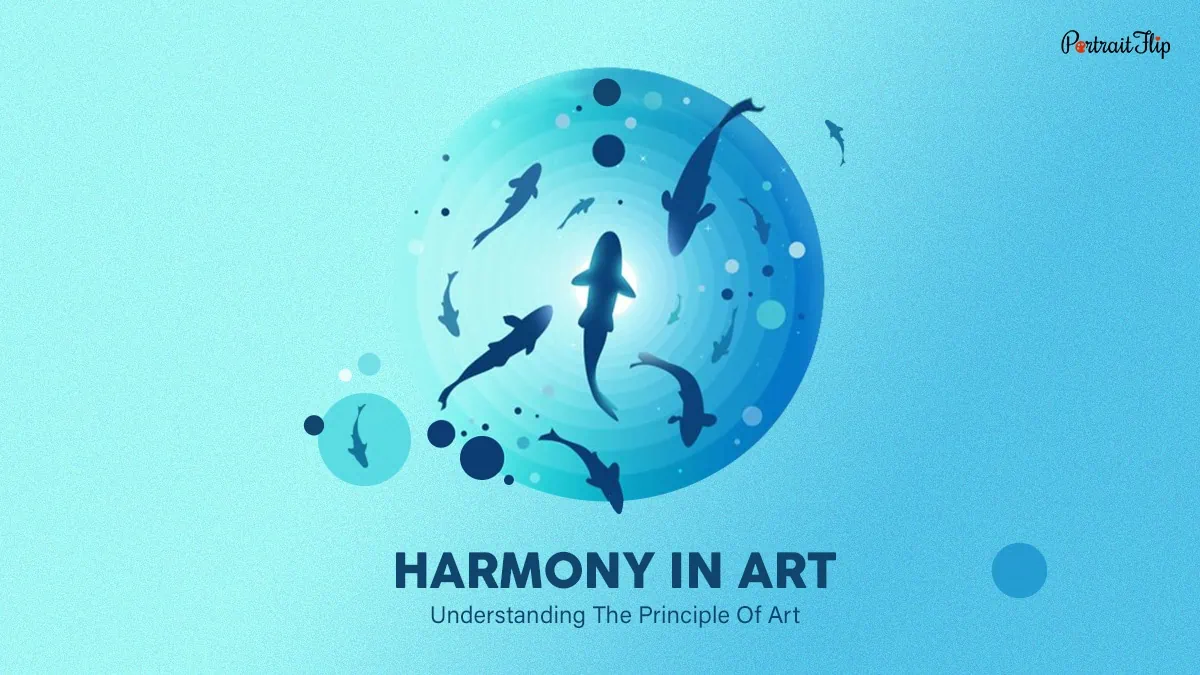When you come across the word harmony, what is the first thing that comes to mind?
Well, if you are a melophile like me, then you can probably think of the arrangement of musical notes and rhythm that provides a pleasing effect to the ears.
And if we talk about harmony in general, then it literally means the arrangement of emotions, feelings and actions so that your mind stays aligned with peace.
But what if art enters the matrix of harmony?
Will it change the definition or perspective of the word, or will it give a whole new meaning to an artwork?
To be really precise, harmony in art plays a really important role in giving the painting a serene effect and, at the same time, pleasing the eyes of the viewers.
Do you think that harmony in art can be specifically understood or observed?
Well, then you are at the right place, because I have researched and compiled for you detailed information about how harmony in art plays a vital role.
Table of contents
What is harmony in art?

As the word harmony suggests, harmony in art means the alignment and arrangement of colors in a way that pleases the eyes of the viewers.
Harmony in art is a component that connects all the colors and gives the artwork a smoother and finer finish.
When the components of an art, like shapes, lines, colors, contrast, etc., get balanced in a harmonious way, that is when harmony in art stands strong, holding onto the art.
It is a matter of fact that harmony helps in bringing out the unity in art by holding onto the components in the artwork.
Harmony in art can be observed when factors like color schemes, similar shapes and forms, and similar elements all underlie an artwork.
This was all about what exactly harmony in art is, now let us focus on how harmony can be created in an artwork.
Ways to Create Harmony in Art

Creating a piece of art definitely takes a lot of effort, and it also takes a combination of the seven elements of art along with the underlying principles.
It is challenging to achieve balance and harmony in your artwork.
Harmony brings together various components to create a sense of unity in the artwork.
When the components are comparable, or at least somewhat comparable, harmony can also be achieved.
When you use harmony as a principle of design, you can actually achieve balance, unity, coherence, and harmony in your painting.
For that, you have to start by controlling unity, and then you can start altering other elements in your artwork via harmony.
That will lead you to a well-balanced and harmonious painting.
You can also refer to some of the well-known works of artists from history who have curated some of the most eye-pleasing compositions.
Relation With Other Principles of Art
Now that we have understood how the concept of harmony in art works and how the overall spectrum of the principles of art functions.
It is known for a fact that all the principles of art are co-related to each other, and that does not mean that they work in a symphony to produce an eye-pleasing artwork.
If you try segregating down the principles of art and try to actually understand the basics of it, then probably harmony in art is your stepping stone.
With this being said, let us try to understand how exactly harmony in art is related to or works in sync with some other principles of art.
Balance and harmony
When we talk about balance in art, what is the first thing that comes to mind?
Well, for me, the first thing that comes to mind is that the use of shapes, lines and other elements has been done precisely to create a balanced artwork.
Now, how is balance in art important to maintain harmony in a painting?
To be more specific, balance in an artwork is important to maintain the overall composition’s equilibrium.
Balance in an artwork provides visual harmony and makes the painting more eye-catching.
In short, balance in art means that the elements in the painting are scattered in a way that none of the elements are weighing each other down.
Balance creates harmony, but the two principles are different on the canvas or as we can say they accompany each other on a canvas.
Unity and harmony
Just as the concept of consistency and co-dependency works under a radar, same goes with the concept of unity and harmony in art.
Unity and harmony definitely compliment each other but at the same time they differ from each other just from the smallest level.
Unity in art refers to the consistent usage of elements as in if an artwork consists of warmer tones then the specific painting will be compiled using warmer tones.
Whereas, on the other hand it is stated that harmony in art refers to the usage of elements in a way that they complement each other.
So harmony in art is important to unite an artwork but on the same page unity in art also helps in creating a harmonious painting.
Variety and harmony
When we talk about the concept of variety in art we often stumble upon the concept of juxtaposition and contrast, because that is what variety in art induces in an artwork.
Variety and harmony may be on complete different levels but what brings them together on the same page is the progression of elements of art.
As variety builds a state of excitement by adding visual interest to an artwork, harmony, on the other hand, adds comfort to the painting.
But, as a matter of fact, variety in art can be harmonious, and that completely depends on how the elements of the painting are placed.
Principles of Harmony in Art
So far, we have read through the concept of harmony in art and understood how it can be created.
As artists, we have been striving to make our pieces of art the finest ones and also need to accumulate the principles of art under a spectrum of combined art.
So, when we learn about harmony as individuals, there are a set of principles that comes with the concept of harmony in art.
With that being said, let us now focus on the principles of harmony in art:
- When working with a work of art or a specific painting, it is important to keep a check on the balance, proportions and representation of the design.
- In the creation of a harmonious work, principles like unity, balance and the other parts of them are interlinked.
- In the process of creating a painting, the concept of diversity in art is solely connected with the painting and its theme.
- You can easily spot and observe a wide range of cultural expressions and symbolic representations of art.
Artworks That Perfectly Explain Harmony

As we have learned about the basics, importance and significance of harmony in art, it is now time to learn about the presence of harmony in some of the most famous artworks.
Many artists have always used the concept of harmony in their paintings, and they have also inculcated other principles of art.
Artworks like The Starry Night by Van Gogh, Composition 8 by Kandinsky, The American Gothic Painting, etc. all show a similar trait of harmony.
When you take a closer look at any of the artwork mentioned above or similar kinds of artwork, you will notice that not only the harmony of colors has been applied, but also the other types of harmonies have been used.
A harmonious painting is not only something that pleases the viewers with the contrast of colors, but it also unites the elements of the painting.
So, in general, all the artworks and paintings that you go through or notice have one thing in common, and that is that the colors are all united together to follow a specific theme of the subject of the painting.
So, this was all about the usage of harmony in art and also how some of the most famous paintings have phenomenally used the palette of colors and elements.
Wrapping It Up
The serenity of an artwork is never achieved without a balance in art along with the other elements and principles of art.
And an artist is the one who helps maintain harmony in art along with the other principles of art.
Harmony in art is not something that is impossible to achieve, but when you focus on the other elements of art, it comes naturally.
Many famous artists have created a lot of paintings that are perfect and prime examples of harmony in art.
And, you know what? You can actually cop some of the most beautiful and famous paintings, and you can get them hand-painted!
Wondering where to get them from? Then,
Author’s Epilogue
If you are still here, then thank you so much for staying till the end!
This was all about shape in art.
We try our best to provide you with the most refined and researched information, so if you find this blog helpful, then do leave your valuable feedback in the comments.
Also, we are active on social media platforms and post fun content there; say hi to us on Instagram or Pinterest.
We are actively posting on YouTube, so don’t forget to subscribe <3
See you soon; till then, stay hydrated!
Bye bye!
FAQs
Some examples of harmony in art are paintings by Van Gogh like the starry night, paintings by Pablo Picasso like les demoilles de Avignon, etc.
The three types of harmony in art are color harmony, shape harmony and texture harmony.
Balance refers to a visual’s appearance of equality or disparity. Combining elements that complement one another results in harmony.





